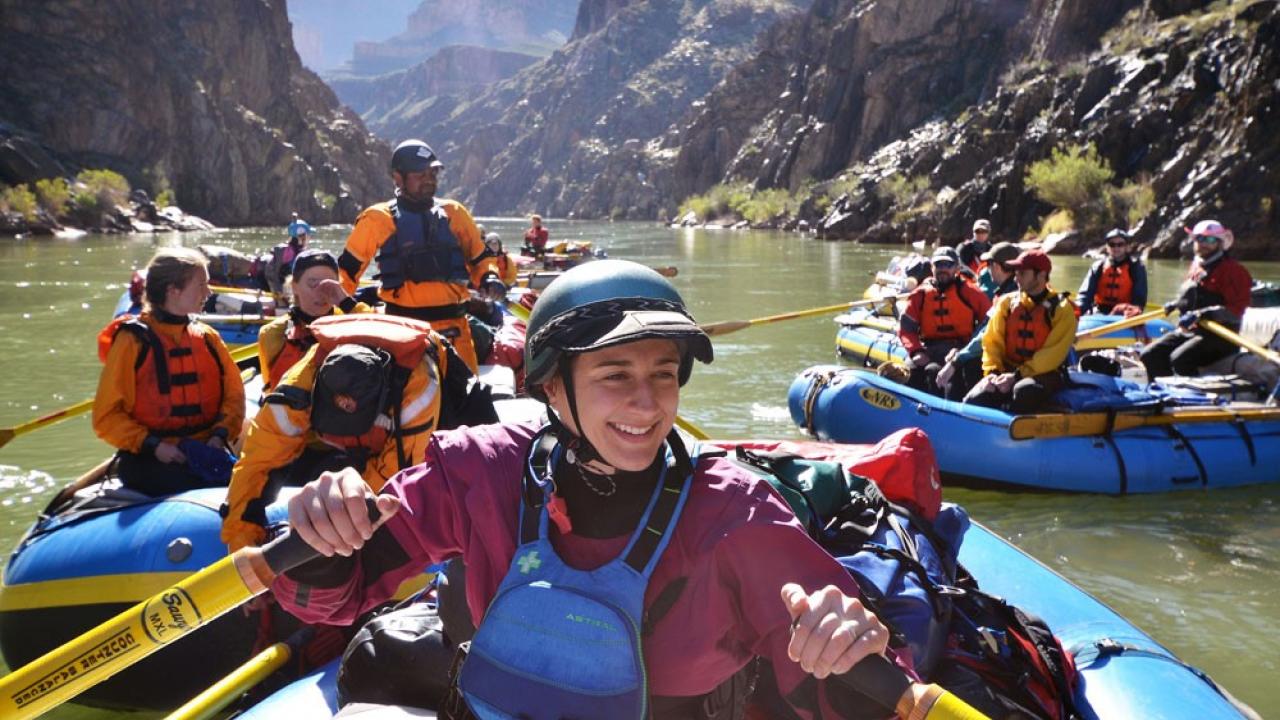
Student Spotlight: Ann Willis
Ann Willis, a first-year Ph.D. student in civil and environmental engineering, recently achieved a milestone typically reserved for a senior researcher or faculty member: she secured a $492,000 grant through the state of California Wildlife Conservation Board for studying reconciliation ecology.
Developed by University of Arizona ecologist Michael Rosenzweig, reconciliation ecology is the science of inventing, establishing and maintaining new habitats to conserve species diversity in places where people live, work and play.
“Reconciliation ecology is the concept of encouraging biodiversity in human-dominated ecosystems,” said Willis. “It’s a recently evolved shift in how people think about diverse ecosystems—that they can exist where humans also have a heavy footprint, and not just in reserves that exclude or minimize human use.”
Working with civil and environmental engineering professor Jay Lund, Willis is investigating large-scale conservation using water management, for which she also received a National Science Foundation graduate research fellowship.
Eighty percent of the world’s water is used for agriculture, and eighty percent of ecosystems that are at high risk occur in places where people live, says Willis.
“Recovering or protecting those ecosystems through a reserve-and-preserve model is not a viable solution. I started thinking about how we could use what we know about ecology, hydrology, water quality, geology, and land use to come up with ways to accomplish large-scale conservation,” said Willis. “What’s more, we can integrate people and nature, rather than thinking of them as separate from one another.”
Willis published a paper on a pilot version of this topic last year, which outlined a completely new way that water temperature works in streams that are most resilient to climate change. Her findings showed for the places people think are most critical (i.e. streams mostly likely to maintain cold-water ecosystems in a climate changed-future), our current regulatory and management policies will not function well because they were designed based on entirely different ideas of how water temperature works.
Typically, streams throughout the western U.S. reach their warmest temperatures in late summer. As a result, resource managers and regulators tend to focus on this time when developing strategies to address warm temperatures for aquatic animals that need cool water.
Willis and her colleagues showed streams that get most of their water from groundwater reach their warmest temperatures in late spring and early summer – months before typical streams, and often when aquatic animals are younger, smaller and less resilient to stress.
When she’s not doing research, Willis serves as the communications director for SPEAK, a program to help scientists learn how to become better communicators. SPEAK is administered through the UC Davis Center for Watershed Sciences, and trains students, staff and faculty on campus, along with scientists from the greater Sacramento region.
She is also raising two young daughters, and volunteers as a whitewater guide for UC Davis’ Grand Canyon class. Follow her on Twitter, and learn more about her work here.
